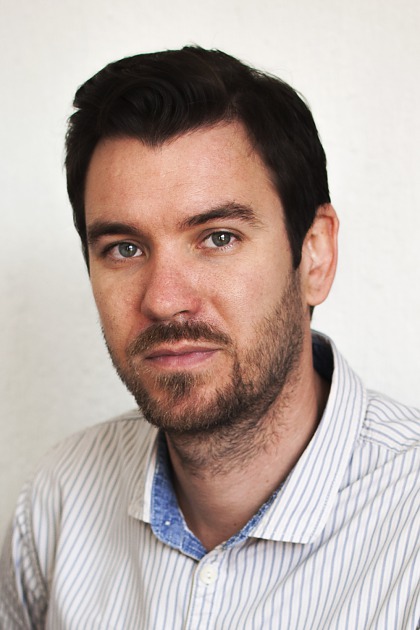Reflections on my Research Image
Martin Larsson is a PhD student School of Social Science, Faculty of Humanities. Here he reflects upon his image, which was the Judges' Runner-up at the 2015 Research Image Awards.
What inspired you to take part in the PSRS 2015 Image Competition?
I have been working with photos and images as part of my research techniques since I did my master’s. I find it interesting both as a way to register what I see, since it gives the possibility to go back and look for details later on, but also to describe places, people, things and situations, and to communicate ideas and feelings. I thought that the PSRS 2015 Image Competition sounded like a perfect way to share my research, and hopefully to inspire others.
How did you capture your research in your image?
My research deals basically with the way that development programmes are experienced in different ways. One of the programmes that I studied was the construction of a dam, which I wanted to see through the perspective of a cooperative of fishermen, since they were going to be directly affected by it. In my research, I have tried to catch important moments, much like you capture a slippery fish, to build an understanding from that. My photo talks about one of these moments, a fragment of the activity to fish at night. To me it was one of the most beautiful experiences that I have had, with the constant concentration it required, the silence of the night, the animals that I saw (among them a small tiger), and then the sunrise. At the same time, I think that the photo shows the violence (which has also been important to my research at large) that was part of the negotiations about the compensation that they were to receive; the way that the fisherman holds the fish reminded me of a gun.
What message did you try to tell through your image?
I wanted to communicate the importance of particular moments, the beauty they possess, and how they pass. At the same time I wanted the photo to work as a rather open metaphor for violence and passion. In this way, I tried to connect my more particular research interests with more general experiences.
How do you think that your image demonstrates "Research in Action"?
An important detail of my photo is the drop that is hanging down from the tail of the fish. That drop represents to me the freezing of a movement, of an action. I must add that this was very difficult, as the fishermen were constantly moving, and I was also part of a team, and had to do my part. While the photo can appear like staged, I only had the time to make two quick shots of this moment before the fishermen started asking me to help out.
How did you integrate your caption with your image?
I thought of the caption as part of the image, and how it is perceived. Therefore I wanted to follow the rhythm of the photo, at the same time as I wanted to add information that is difficult to read in the photo.
How do you feel that your image helps you communicate your research to an interdisciplinary audience?
I am of course happy and proud to have had that opportunity. Generally speaking, I think that photography is an excellent meeting point; because of its openness, it can create a space of communication not only between different disciplines, but also with a wider public.
Would you advise/recommend other researchers to take part in the competition and why?
I would definitely recommend other researchers to take part in the competition, since it can make you think about your research in new ways, not only because it forces you to think in images, but also because it opens up the possibility to further discussions about your research with people from other fields and with other experiences.
What would your advise be to other researchers thinking of taking part next year?
I would advise others thinking of taking part to always have their cameras around while doing their research, and to think about their ideas in images. This, I think, is not only useful for the competition. While some basic knowledge about composition of images and so forth is of course helpful, the big treasure that researchers have when taking photos is their advanced understanding of what they are doing, which leads them to seeing things in ways that others would probably not. The step from seeing things in the light of the project, to taking a photo that condenses it, is not that far.


